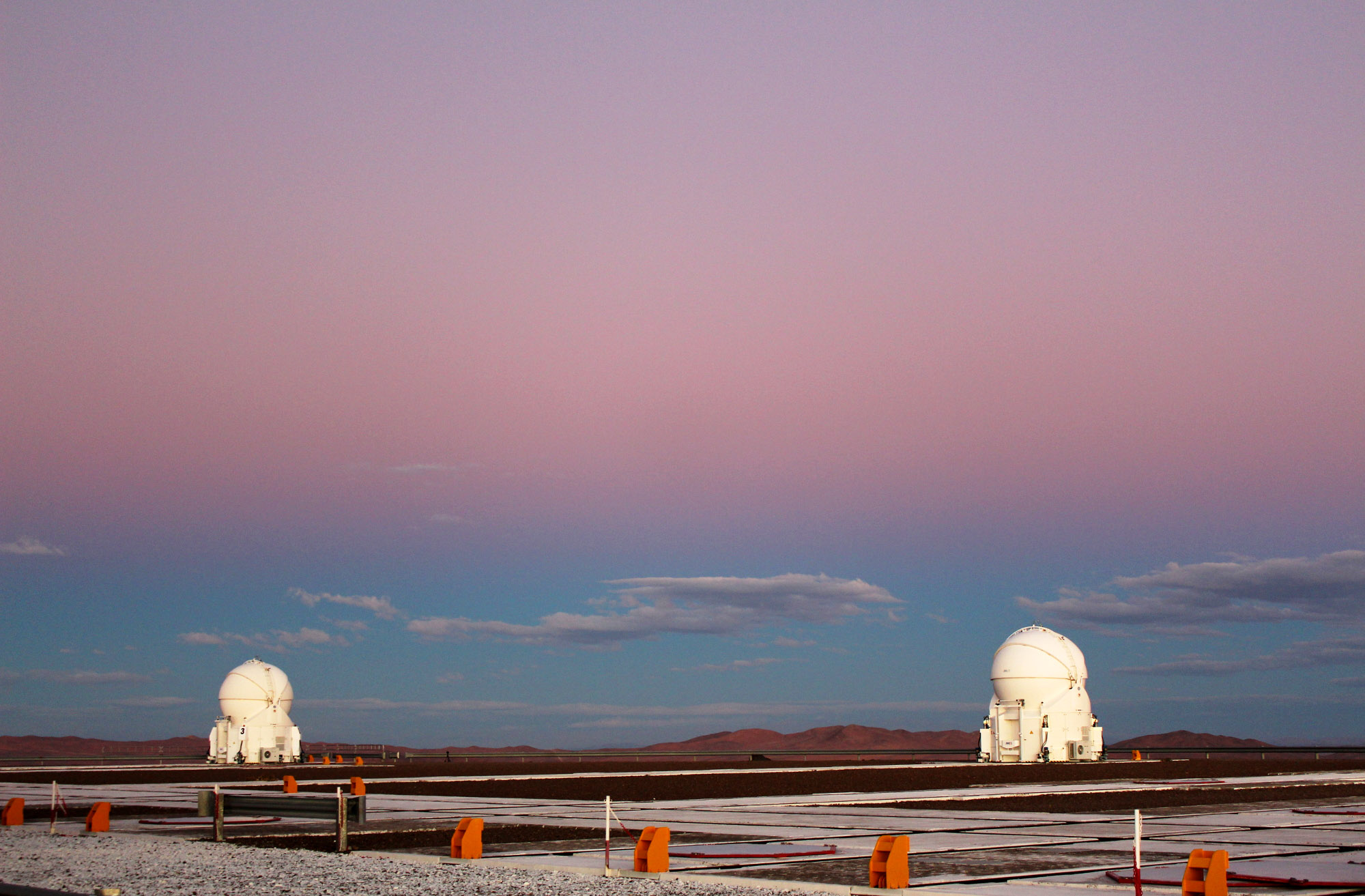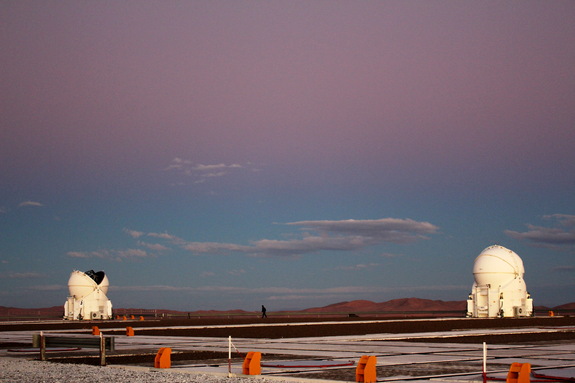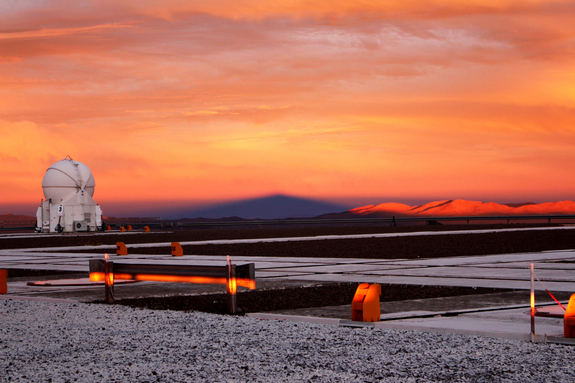
The Belt of Venus occurs in the anti-sunward direction just after sunset and, depending on atmospheric conditions, a very dark band (the Earth’s shadow) and an orange/pink glow (backscattered sunlight) can become very obvious.
Credit: Ian O’Neill
A beautiful atmospheric phenomenon descended over the ESO’s Very Large Telescope (VLT) last week, giving the participants of the inaugural #MeetESO social media event an evening treat.
#MeetESO: Visiting the World’s Most Powerful Telescopes
The “Belt of Venus” occurs just after sunset on cloudless evenings and, depending on atmospheric conditions, a reddish glowing band may appear in the anti-sunward direction. The glow itself is caused by back-scattered sunlight bouncing off dust particles suspended high in the atmosphere. Below the diffuse glow is the Earth’s shadow above the horizon. To observe it, you just need to have the setting sun at your back and face the opposite direction as sunset ends and dusk commences.

The domes of the four main telescopes and four auxiliary telescopes of the Very Large Telescope commence opening ahead of a night’s observing on May 9 during the #MeetESO social media event. Click for high-resolution version.
Credit: Ian O’Neill
ANALYSIS: Mercury Transit: How We Scaled the Cosmos
On May 9, after the transit of Mercury dazzled the world , Discovery News was attending the #MeetESO event atop Cerro Paranal , a 2,664 meter (8,740 ft) high mountain in the Atacama Desert in northern Chile on the platform of the VLT. As the sun set over the desert clouds below, the Belt of Venus rose over the VLT’s auxiliary telescopes behind us as the observatory’s 4 main 8.2 meter telescope domes opened.
The VLT is one of the most complex and advanced optical telescopes on the planet. Composed of 4 primary telescopes and 4 “auxiliary” 1.8 meter telescopes , the entire system can work as individual telescopes or in groups as the VLT Interferometer (VLTI). Interferometers use multiple telescopes to combine their observing power, mimicking a single, larger telescope. And on Paranal, the VLTI (including the VLT Survey Telescope ) sit atop a huge concrete platform under some of the clearest skies on the planet.
ANALYSIS: Very Large Telescope Fires-Up Awesome Laser System

One of the VLT’s auxiliary telescope domes open after sunset, with the fading Band of Venus above.
Credit: Ian O’Neill
As a bonus, one of the main telescopes has now been fitted with four adaptive optics lasers, to help remove atmospheric turbulence from observations. You can read more about the VLT adaptive optics system here .
PHOTOS: ALMA: New Jewel of the Atacama Desert
For the entire #MeetESO visit, high winds and (at the site of the Atacama Large Millimeter/submillimeter Array) even blizzards made conditions a challenge. Though clouds descended over Paranal soon after we arrived at the observatory, another incredible sunset view presented itself on May 8. Though the Band of Venus wasn’t visible, the deep red sunset cast a dramatic shadow of Cerro Paranal, ending the day on a picture-perfect note:

The shadow of Cerro Paranal stretches into the distance on May 8 at sunset.
Credit: Ian O’Neill
Discovery News would like to thank the ESO and ALMA staff for being so accommodating and for making this Atacama trip a possibility, plus all the #MeetESO participants for making the visit so memorable. While we were in Chile, cameraman Alex Gerhard and I interviewed several astronomers and ESO engineers for a series of online videos for DNews, so stay tuned.
Originally published on Discovery News .
Comments are closed.